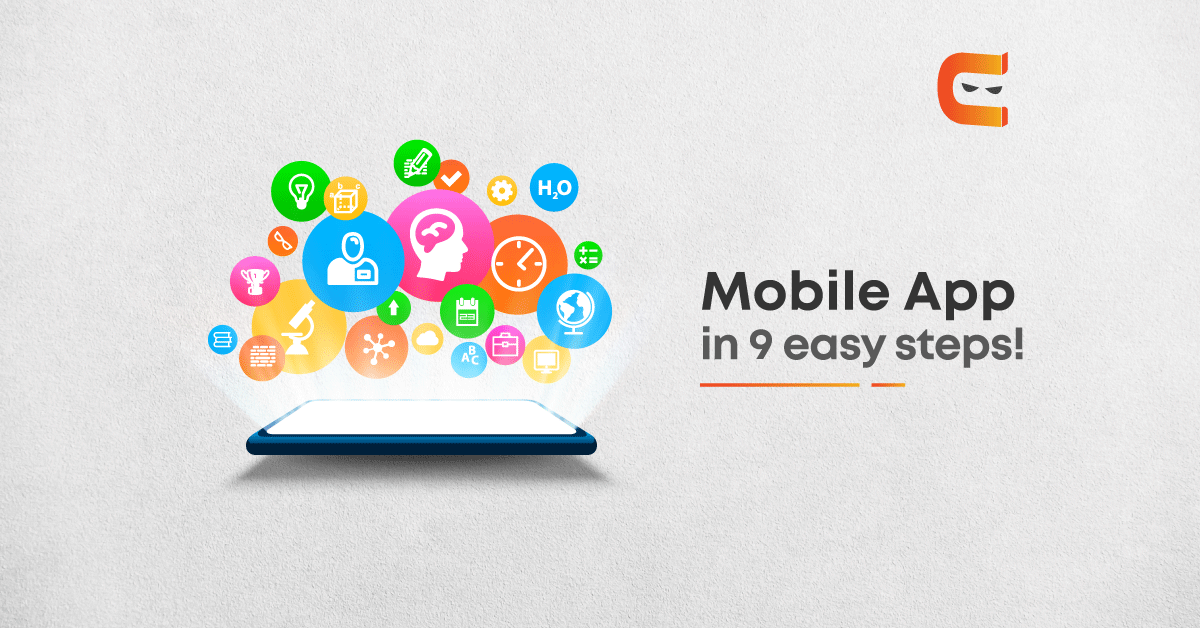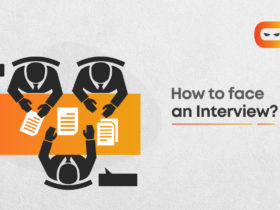As a beginner, you often wonder that the App Development field is very dense and you can’t figure where to start. Therefore, we have mentioned the nine steps of building a mobile app very distinctly in this article, so that you don’t stumble across anything.
Table of Contents
Let’s discuss each step required for creating an app:
Step One: Draw a sketch of your app idea
You can use a pen and paper or any digital notepad such as the paint or 3D paint for designing the basic structure of your app. You need to down the number of screens, their navigation strategy, and color scheme in this stage.
Incoherence with the SRS document prepared with the client, you need to include all the elements that your client has mentioned, accordingly choose the software and developmental tools.
Estimated Duration: Three days
Estimated Cost: None
Image Source: SmashingMagazine.com
Step Two: Do a detailed market research
Before launching your app, you need to observe the market trends related to the app utility, the developmental software, the designing tools, and so on.
This is to ensure that the idea you are working on is a feasible idea and to know about the status of similar apps. You need to make sure that you offer a wider set of features to surpass your competitors else your app won’t be a success in the app market.
You can even go through the play store and app store readings of similar apps.
Estimated Duration: One week
Estimated Cost: None
Step Three: Create a flow-chart of your app
A flow-chart is a very important tool, both in terms of time estimation and task alignment. It helps us to figure out the sequence in which the activities have to be carried out for the completion of the app.
The other project management structures such as the Gantt Chart, PERT Chart, and CPM Chart can be easily built using the Flowchart. A flow-chart is recorded in the SRS to give the ad hoc timeline to the client until the CPM chart is prepared.
Estimated Duration: One day
Estimated Cost: None
Image Source: didgital.projectmanager.com
Step Four: Sketch the user-interface design of your app
Although, many developers ignore this step yet it is one of the most intrinsic steps of app development. If you want your application to stand out among the apps of the same kind, you need to design a very user-friendly and interactive user-interface.
Apart from the UI elements like buttons, text boxes, etc, nowadays navigation among the screens can also be set-up using User-interface designing tools. There are various open-source design tools such as Adobe, Sketch, Invision Studio, and so on.
Estimated Duration: Five days
Estimated Cost: None, you might incur some cost if you use any paid software.
Image Source: elegant themes
Step Five: Develop the code for the app
The mobile applications that work efficiently on multiple mobile platforms such as Android, iOS, etc. are known as cross-platform mobile applications development. These apps are fully compatible with iOS, Android, and Windows environments.
This approach comes in very cost-effective as the entire design and development process is reduced by a factor of three. There are a few big platforms that are using the cross-platform framework and making the most out of it. A few popular examples include Skype, Instagram, Facebook, UberEats, delivery.com, Pinterest, Vogue, Tesla, and Bloomberg.
Estimated Duration: Two months
Estimated Cost: Variable with respect to the developer and the utility of the app
Step Six: Launch Alpha-testing and Beta-Testing
Alpha Testing is a type of software testing performed to identify bugs before releasing the product to real users or to the public, whereas, Beta testing is performed by clients who are not part of the organization. Alpha testing is performed at the developer’s site.
Beta testing is performed at the end-user of the product. All the bugs reported in both the scenarios are well-documented and eradicated at the earliest and then the app is launched.
Estimated Duration: One Month
Estimated Cost: Depends on the Software tester
Image Source: InstaBug
Step Seven: Publish the App in the Play Store or App Store
Uploading the code on GitHub might get you a few users, but your app won’t be addressed as commercialized unless you publish it on the Google Play Store or App Store. Most of the common people don’t use GitHub and download maximum apps from the Google Play Store or App Store.
This step is the actual charge incurring step as it is one of the most intrinsic milestones of creating an app. Therefore, it is highly recommended to have a few rounds of alpha and beta testing before the final launch.
Estimated Duration: One Day
Estimated Cost: $25 one time for Google Play Store or $99/year for App Store
Step Eight: Start the Marketing Campaign
With the tremendous increase in the number of apps on the Google Play Store and App Store, it becomes very essential to launch an efficient marketing campaign for your app so that it creates an impact in society and gets the maximum users. Crispy taglines, creative user-interface, video-based social-media marketing highly contribute to the success of apps.
Estimated Duration: Parallelly with alpha and beta testing
Estimated Cost: Depends on your management team
Image Source: Avivo.com
Step Nine: Make amendments according to the user-feedback
User- feedback is one of the most valued features of the Play Store or App Store. User feedback can be collected in various forms such as the ratings received from the users, reviews written on the Play Store or the number of average downloads per day. Google Play Store or App Store takes the user-feedback very critically.If your app has a very poor rating, it might be eventually removed from the platform, whereas if the rating is high, your app will appear on the top of the search query list.
Image Source: e-front learning
Frequently Asked Questions
App development tools such as the Android Studio and Flutter are absolutely free. Although, some of the software might have some in-app purchase features for certain premium features. Therefore, literally building an app is absolutely free. If your research-base is strong, then you can look for open-source alternatives for all the app designing and development tools. However, if you intend to publish your app on Play Store you will have to pay a sum of $25, post-this all your apps can be published free of cost. The app store has a yearly plan of $99.
You can create your mobile app for free by downloading Android Studio/Flutter on your system and then writing the relevant code. You can use Adobe for designing your app and other open-source platforms like GitHub and YouTube for getting relevant samples and documents. You can share the APK of the app via link-sharing or Google but publishing the app on the Play Store or App Store comes with certain charges.
For creating your own app you can use any native app development IDE such as the Android Studio or you can go with any Hybrid app development too such as Flutter, Ionic, Cordova, Swift and so on. After creating your app you can test it using testing software such as Appium, Selenium and so on. Refer to the Android developer’s site in case you stumble across anything or you can even post your queries in the Developers’ community.
A mobile app is usually made in two broad steps:
Front-End Development: This corresponds to the UI/UX designing followed by creating the actual app user-interface using the respective developmental tool.
Back-End Development: This corresponds to the integral coding of the app which is usually done by creating objects and calling relevant APIs.The utility establishment and client-served-based coding are done in this stage. An app can be a native Android app or a hybrid app, this depends on the client’s requirement and the programming language used by the developer.
If you are a beginner and have no idea about object-oriented programming, you can use the MIT App Inventor, it is a very user-friendly and interactive app development software based on block-based programming. You can build APKs and release the app on the Play Store or App Store using it. However, high computing server-client apps cannot be created using this.
Furthermore, if you want to create client-server-based high computing apps you have only one prerequisite which is to learn an object-oriented language such as Java, Kotlin, C#, Swift, and so on. Any programmer who knows OOPS can easily take up Android Development. Android Studio is highly recommended for beginners as it is well-documented and interactive whereas for experienced developers Flutter is more suitable as it is a cross-platform development tool.
Conclusion
As a developer, you should keep in mind, that every app has a potential target market and every client has a different requirement.
Therefore, all the apps should not be analyzed with the same parameters. As a developer, one should be very clear with the System Requirement Software Document, in the beginning, to avoid any ambiguity at the end.
Apart from the usual permissions for publishing the App, as soon as an idea hits your mind, you must get a patent else, if the same idea is registered by someone else, you might get caught up in copyright issues.
Learning app development is a gradual process, you might come across numerous errors while coding, you must not give up, rather you must employ your debugging skills for coding the app.
By Vanshika Singolia















Leave a Reply